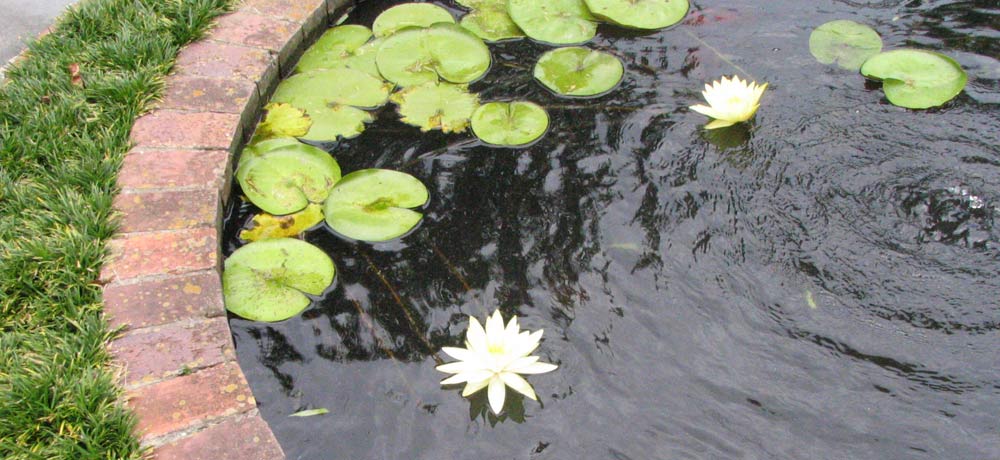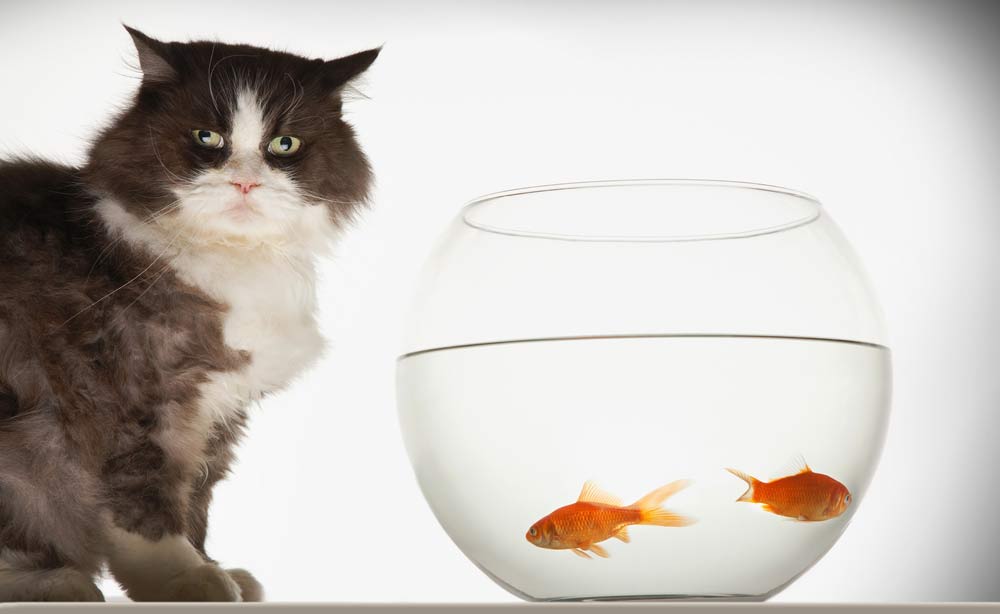
Fish ponds are an excellent addition to your garden or yard.
They are a wonderful way to promote peace, calmness and serenity in your outdoor space and with a little attention, they will bring joy to you for a long time to come.
That being said, fish ponds do require some maintenance.
Fish pond care mainly revolves around preserving water quality to allow aquatic plants and fish to flourish and ensuring that your mini-ecosystem is balanced.
There is a lot that can go wrong with a fish pond but luckily, there are signs that will let you know something’s off.
From plant cover to leaves on the surface or too many fish, each problem can be addressed to make sure your fish pond continues to thrive.
Healthy Fish!
The most notable element of a fish pond is, well, the fish. Taking care of the fish should be your main goal and as living creatures, they require some love and care.
Makes sense right?
With fish pond care, there can be too much of a good thing. You will have to make sure your fish population stays in check and they are fed the right amount of food.
A general rule of thumb is 10″ of fish per 100 gallons of water. This means you can have a handful of large coy fish or hundreds of minnows, depending on the size of your pond.
But remember:
Too many fish may deplete the oxygen in your pond and produce too much waste which may negatively impact water quality.
When selecting fish for your pond, make sure you are selecting fish that are healthy and not pale in color.
A small number of dead fish in the stock you select from may indicate disease, so make sure the entire pool of fish is healthy when you add it to the pond. This will help ensure that diseases do not spread early on.
It is also important to avoid over-feeding your fish.

Why is this so?
Fish can only consume so much food and over-feeding will create food waste which will decay at the bottom of your pond.
In this case, slight under-feeding is better than slight over-feeding.
Makes sense right?
With the proper amount of aquatic plant life in your pond, fish will be able to make up for some fish food but there is a definite limit of how much fish can eat.
Any uneaten food is a bad thing and you can control how much fish food you add to the pond.
Ensuring Water Quality
Newsflash:
To create a healthy habitat for your fish pond, water quality is critical. It is important to have a well-functioning filtration system that keeps the water fresh, removes waste and isn’t stagnant.
Stagnant water can lead to the proliferation of unwanted plants and pests. You will likely need a water pump to circulate the equivalent of the entire pond’s water once an hour.
Here’s the thing:
This will ensure that the water is not stagnant which would promote decay and the growth of unwanted plants like algae.
Small amounts of algae are good for your pond’s ecosystem, as they provide a source of food for your fish, but algae can be invasive and deplete the oxygen in your pond.
Planting larger competitors like lilies take up space on the surface and keep light from penetrating into the pond, where algae can flourish.

Aquatic Plants
Fish pond care also involves nurturing aquatic plants that produce oxygen for your fish and naturally filter the water.
The key is to:
Choose aquatic plants that are suitable for the climate you live in and plants that are known to naturally clean water.
Similar to the first point, there can be too much of a good thing. Too much plant coverage on the surface of your pond can deplete the oxygen in the pond itself.
A general rule of thumb is limiting aquatic plant cover to approximately half of your pond’s surface.
It is that simple:
Aquatic plants like lilies and marsh reeds are great for producing oxygen and thrive even in backyard fish ponds. The plants around your pond also impact the pond’s overall health.
This may seem counter-intuitive, but maintaining the plants outside of your pond will also help with pond maintenance.
Another top tip:
Prune trees that overhang the pond so they don’t shed as many leaves into the pond.

General Maintenance
Aside from fish care, water filtration and plant maintenance, fish pond care involves some general maintenance similar to an outdoor swimming pool.
Remove any stray debris that settles in your pond, like leaves or brush.
Skimmer Nets
Just like a swimming pool, consider using a skimmer net to remove stray leaves from the surface of your pond. If they sink and decay, they can release toxic gases in your pond that will degrade the water quality.
Pond Vacuums
If you’re especially worried about debris at the bottom of your pond, a pond vacuum can help remove solid waste.
Pond vacuums are useful for dredging up solid waste at the bottom and removing waste that you can’t reach manually. This is especially useful if your fish pond is deep and hard to clean.
Keep It Cool
During the hot summer months, the pond’s temperature should not get too hot, or you run the risk of killing the animals within the pond.
Plant coverage can provide some relief, and you may want to consider an aerator if you regularly deal with extreme heat.
Fish hovering around the surface gasping for breath are a sign that the oxygen levels in your pond are low.

And don’t forget:
Make sure you regularly check the acidity of your pond water to ensure it is not too acidic for aquatic life.
Decaying plants and chlorine can negatively affect the chemical composition of your pond water. Avoiding waste accumulation will help diminish the risk of your pond water chemistry being off.
Fish ponds are a wonderful addition to any garden. By following the steps mentioned above, you can ensure your pond thrives for years.
There are a lot of issues to look out for in a fish pond but with a little diligence and care, you can create your own burgeoning ecosystem.
By paying attention to water quality, aquatic plants and your fish population, you can catch signs of imbalance and correct them in time.
USEFUL RESOURCES
Want to learn more about how to care for your pond? Check out these links:
- Five Tips for a Healthy Pond – Penn State Extension
- How to Maintain a Healthy Pond – Tractor Supply
- How to Keep Pond Water Clear Naturally – Get Busy Gardening

